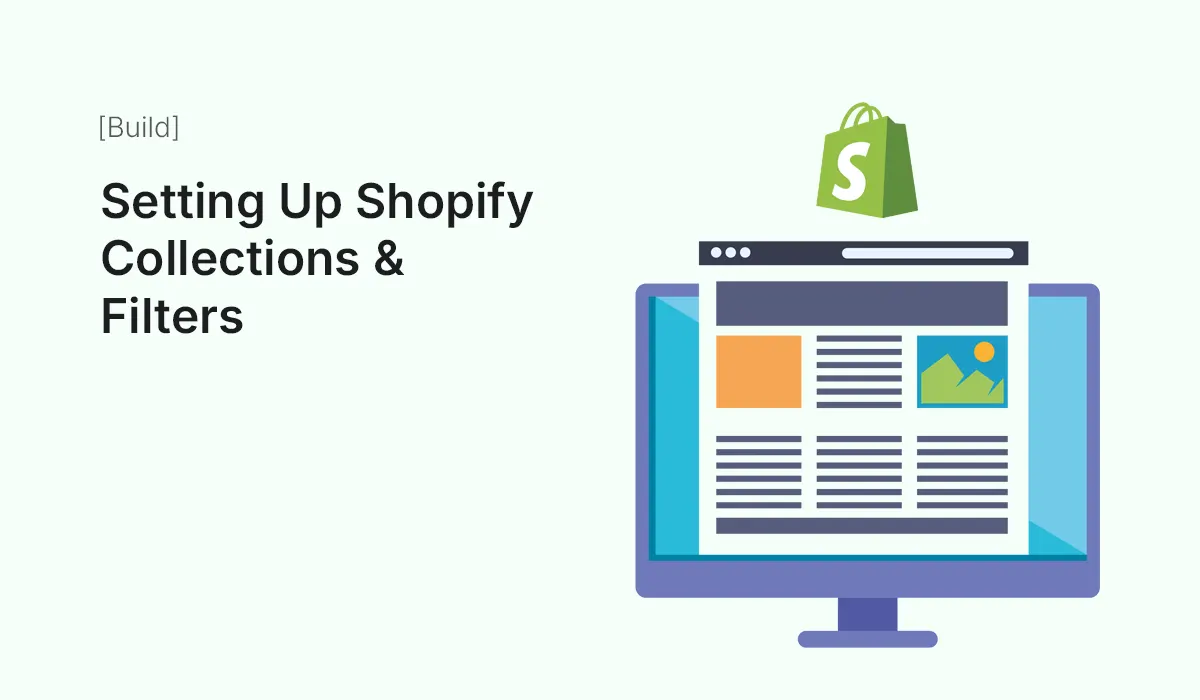Introduction
When running an online store, product organization is everything. Imagine walking into a physical store where items are scattered randomly — frustrating, right? The same applies to e-commerce.
On Shopify, Collections and Filters are the key tools that make your store easy to navigate. They help shoppers quickly find what they want, improve the browsing experience, and increase conversions.
In this guide, we’ll cover how to set up Shopify collections and filters step by step, along with best practices to organize your products effectively.
What Are Shopify Collections?
Collections in Shopify are groups of products that share common features or purposes. They work like “categories” in a traditional store.
Types of Shopify Collections
- Manual Collections
- You select and add products manually.
- Best for small stores or unique curated sets (e.g., “Editor’s Picks”).
- Automated Collections
- Products are automatically grouped based on conditions (price, vendor, tag, etc.).
- Ideal for larger stores with hundreds or thousands of products.
Example: A clothing store can create collections like Men’s Wear, Women’s Wear, New Arrivals, Sale Items, etc.
What Are Shopify Filters?
Filters (also known as faceted search) allow customers to refine results within a collection or search page.
Common filter options include:
- Price range
- Color
- Size
- Brand/vendor
- Availability (in stock/out of stock)
- Product type
Example: In a “Shoes” collection, filters let shoppers refine by size 9, black color, under $100.
Benefits of Collections & Filters
- Improved Navigation – Customers can browse logically instead of scrolling endlessly.
- Better User Experience – Filters make shopping faster and smoother.
- Higher Conversions – Shoppers find the right product faster.
- SEO Advantages – Collections often rank for category-level keywords (e.g., “Buy Men’s Running Shoes”).
Step 1: Creating Shopify Collections
- From your Shopify Admin, go to Products > Collections.
- Click Create Collection.
- Enter a collection title and description.
- Choose Manual or Automated.
- For Automated: Set rules (e.g., Product tag = Summer).
- Upload a collection image (use high-quality visuals).
- Save and add products.
Example Setup
- Collection: “New Arrivals”
- Rule: Product Tag = “new”
- Result: Any product tagged “new” is automatically added.
Step 2: Organizing Products with Tags
Tags are essential for managing collections and filters.
- Use descriptive tags: summer, cotton, organic, discount, black, size-10.
- Keep a consistent tagging system (decide on lowercase vs. uppercase).
- Use tags to drive automated collections.
Example: Products tagged with “sale” automatically appear in the “Sale” collection.
Step 3: Displaying Collections in Your Store
- Add collections to your main menu (Navigation > Menus).
- Highlight featured collections on your homepage.
- Use collection banners/images for visual appeal.
Step 4: Enabling Shopify Filters
As of Shopify’s Online Store 2.0, you can set up native filters without extra apps.
How to Enable Filters
- Go to Online Store > Navigation > Filters.
- Select filter types (availability, price, product type, vendor, etc.).
- Add custom filters using product tags or metafields.
- Save and preview in your storefront.
Example: For a “Jackets” collection, you can enable filters for Size, Color, Price Range.
Step 5: Using Metafields for Advanced Filters
Metafields let you add custom product data (e.g., fabric type, care instructions, material).
- Add metafields under Settings > Custom Data > Products.
- Populate values (e.g., “100% cotton”).
- Add them as filters in your store.
This allows for unique, industry-specific filters beyond standard options.
Step 6: Filter & Collection Apps (For Advanced Needs)
While Shopify’s built-in filters are great, apps give more flexibility.
- Boost Product Filter & Search – Advanced filters, smart search, merchandising.
- Searchanise – AI-powered filtering and search.
- Power Tools Filter Menu – Custom filter design for large catalogs.
Recommended for stores with thousands of products.
Step 7: SEO Optimization for Collections
Collections often rank for high-traffic keywords. Optimize them like landing pages:
- Write unique collection descriptions with keywords.
- Optimize meta title and description.
- Add high-quality collection images with alt text.
- Internal link to collections from blog posts and other pages.
Example: Collection “Running Shoes” could target keywords like best men’s running shoes online.
Step 8: Best Practices for Collections & Filters
- Keep collections logical and simple (don’t overwhelm shoppers).
- Enable relevant filters only (don’t show size filter on accessories).
- Use smart collections like “Best Sellers” or “Under $50”.
- Monitor analytics to see which collections drive most sales.
- Avoid duplicate content by setting canonical URLs for filtered pages.
Common Mistakes to Avoid
- Too many collections — confuses customers.
- Inconsistent tags — breaks automated collections.
- Overloading filters — slows site and overwhelms users.
- Forgetting SEO — missing opportunity to rank category pages.
Conclusion
Setting up Shopify collections and filters is not just about organizing products — it’s about improving customer experience, boosting SEO, and driving conversions.
A well-structured store makes it easy for shoppers to find what they need, reducing frustration and increasing sales. Whether you’re running a small boutique or a large catalog, collections and filters are the backbone of an effective Shopify store.
Start small with manual collections, tags, and basic filters. As your store grows, leverage automation, metafields, and advanced filtering apps.
Ready to improve your store’s navigation? Start setting up Shopify collections & filters today and make shopping easier while boosting conversions!






